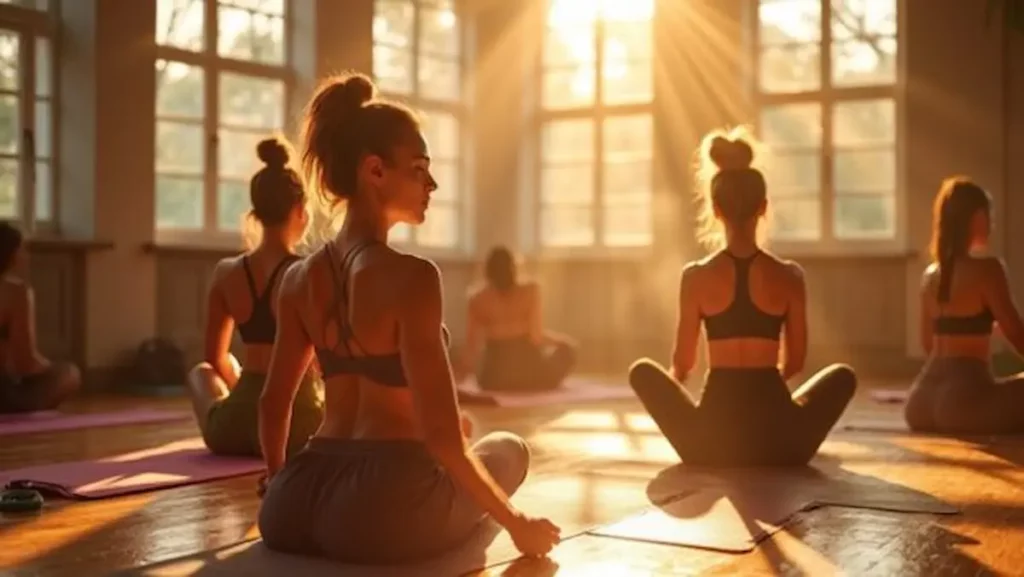
What is Bikram Yoga? Simple guide for beginners
Unlock the secrets of Bikram Yoga’s heated 26-pose sequence and discover why this intense practice transforms body and mind unlike any other.


Hot yoga turns up the heat—literally. Practiced in a warm, sweat-inducing environment, it challenges both body and mind in ways that surprise even seasoned yogis. The combination of movement, breath, and heat creates a powerful rhythm that pushes limits and sharpens focus.

But what really happens when you step into that heated room? And why do so many people swear by the experience?
Let’s explore what makes hot yoga more than just a workout, and why it might be exactly the challenge your body’s been waiting for.
Hot yoga originated in the 1970s, popularized by Bikram Choudhury in California. The practice involves performing yoga postures in a heated room to simulate tropical conditions. This controlled environment requires careful attention to hydration and personal limits, ensuring practitioners maintain safety while adapting to elevated temperatures during sessions.
You might also like: What type of fitness training can affect the hormone erythropoietin?
The appeal of hot yoga lies in its unique combination of heat and movement, which enhances physical and mental well-being.
Practicing in a warm environment increases flexibility, promotes detoxification through sweating, and supports cardiovascular health. Additionally, it encourages mindfulness and stress reduction.
To guarantee safety, proper hydration and gradual acclimation to heat are essential for all practitioners.
Although all hot yoga styles share the common element of practicing in a heated room, they differ considerably in structure, intensity, and focus.
Popular variations include Bikram Yoga, featuring a fixed sequence, and Vinyasa Hot Yoga, which emphasizes fluid movement.
Each style requires attentiveness to personal limits and hydration to guarantee safety during practice in elevated temperatures.
Since hot yoga sessions take place in a heated environment, participants can expect increased sweating and a more intense physical challenge compared to traditional yoga.
Classes often include guided breathing, stretching, and strength poses.
It is important to stay hydrated and listen to one’s body to avoid overheating or injury.
Moderation and awareness support a safe, effective practice.
Proper gear and attire play an essential role in maximizing comfort and safety during hot yoga sessions.
Lightweight, moisture-wicking clothing helps regulate body temperature and prevent overheating. Non-slip yoga mats provide necessary stability on heated floors.
Additionally, having a towel to absorb sweat and water bottles for hydration supports maintaining focus and minimizing risks associated with intense heat and physical exertion.
Awareness of health considerations is essential when practicing hot yoga due to the intense heat and humidity involved.
Participants should stay hydrated, avoid overexertion, and listen to their bodies. Individuals with heart conditions, pregnancy, or heat sensitivity should consult a healthcare professional before attending.
Proper acclimation, gradual intensity increase, and recognizing signs of heat exhaustion are vital for a safe experience.
Although the high temperature and humidity of hot yoga create challenging conditions, they simultaneously facilitate deeper muscle relaxation and increased joint mobility.
This environment allows practitioners to safely stretch further, enhancing flexibility. Additionally, the demanding poses build muscular strength and endurance.
Proper hydration and mindful pacing remain essential to prevent injury while maximizing these physical benefits.
The increased flexibility and strength gained from hot yoga come with unique demands that beginners should approach with care.
It is advised to stay well-hydrated, wear breathable clothing, and listen to the body’s signals to avoid overexertion.
Starting with shorter sessions and gradually increasing duration helps the body acclimate safely to the heat and intensity of the practice.
Hot yoga offers a unique blend of physical challenge and mental focus by combining traditional yoga postures with a heated environment. Its benefits include improved flexibility, detoxification, and stress relief, making it an appealing practice for many. However, participants should prioritize hydration and safety to avoid overheating. With proper preparation and awareness, hot yoga can be a rewarding addition to a fitness routine, supporting overall health and well-being.

Unlock the secrets of Bikram Yoga’s heated 26-pose sequence and discover why this intense practice transforms body and mind unlike any other.

Noticing the benefits of yoga is easy, but knowing how to start and maintain a practice takes more than just poses. Discover the essentials now.

Pregnancy brings unique challenges—can hot yoga's heat be safely managed, or does it pose hidden risks expecting mothers should know? Find out more.

Soft, soothing stretches and mindful breathing define chair yoga, but its surprising benefits extend far beyond simple seated poses. Discover more inside.

Unlock the surprising benefits yoga offers your body, from enhanced flexibility to stress relief—discover how it transforms more than just your muscles.

Achieving muscle growth through yoga might surprise you; discover how poses can sculpt strength beyond mere flexibility and relaxation.